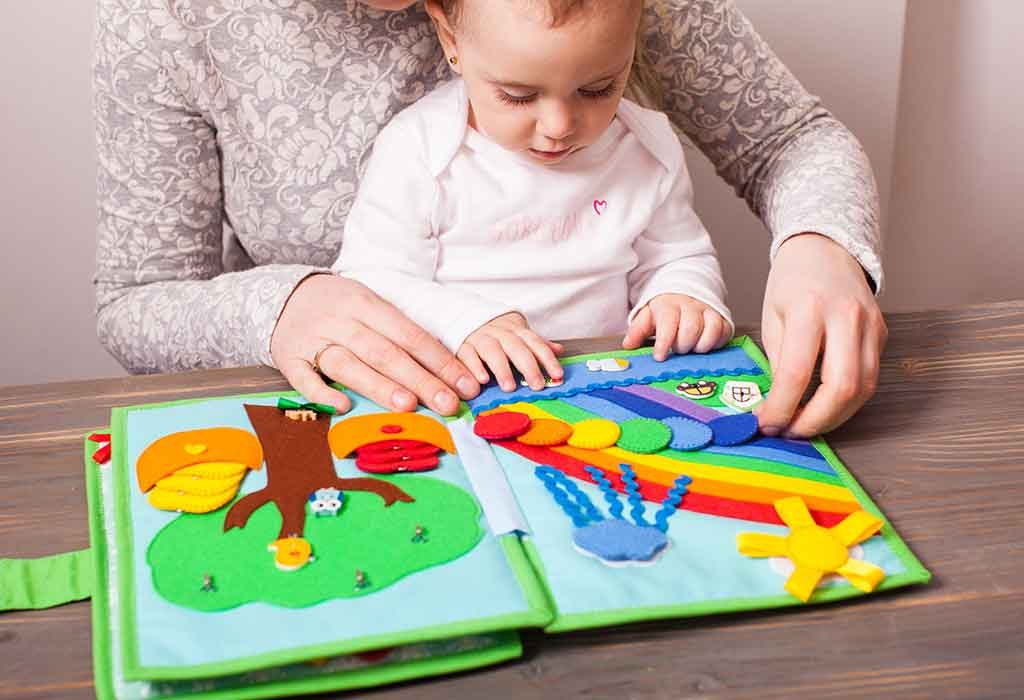Busy books, also known as quiet books, are interactive learning tools designed to keep young children engaged and entertained while promoting various developmental skills. These books typically feature a range of activities and textures aimed at stimulating a child’s senses and encouraging exploration.
Benefits of Busy Books for Children
Enhancing Fine Motor Skills
Busy books often include activities that require children to manipulate small objects, such as buttons, zippers, and Velcro fasteners. Engaging in these activities helps develop fine motor skills, which are essential for tasks like writing and self-care.
Encouraging Creativity
The interactive nature of busy books encourages children to use their imagination and creativity. Whether it’s arranging felt shapes or storytelling with fabric characters, these books provide opportunities for open-ended play and self-expression.
Promoting Cognitive Development
Many activities found in busy books are designed to challenge children’s cognitive abilities. From matching shapes and colors to solving puzzles, these activities help develop problem-solving skills, memory, and concentration.
How to Make a Busy Book
Creating a busy book can be a rewarding DIY project. Here’s a basic guide to getting started:
Materials Needed
- Felt or fabric
- Scissors
- Thread and needle
- Buttons, zippers, Velcro, and other fasteners
- Embellishments such as ribbons, beads, and sequins
- Fabric glue
Step-by-Step Guide
- Plan the layout and activities for your busy book.
- Cut out the desired shapes and pieces from felt or fabric.
- Attach fasteners and embellishments to each activity page.
- Sew or glue the pages together to form the book.
- Add a cover and binding to complete the book.
Ideas for Busy Book Activities
- Matching games using felt shapes or animals
- Buttoning and zipping exercises to practice fine motor skills
- Shape sorting activities with pockets and felt shapes
- Counting and color recognition activities using buttons or beads
Importance of Personalization
Customizing a busy book to suit a child’s interests and developmental stage can enhance its effectiveness. Consider incorporating themes, colors, and activities that resonate with the child’s preferences and abilities.
Busy Books for Different Age Groups
Busy books can be tailored to suit children of various ages and developmental stages. While younger children may benefit from simple activities like buttoning and sorting, older children may enjoy more complex puzzles and games.
Maintenance and Care Tips
To prolong the lifespan of a busy book, it’s essential to handle it with care and store it properly when not in use. Avoid exposing the book to excessive moisture or rough handling, and periodically check for any signs of wear and tear.
Where to Find Busy Books
Busy books can be purchased from a variety of sources, including online marketplaces like Etsy and Amazon, as well as local toy stores and educational retailers. Additionally, many parents and educators share DIY busy book tutorials and ideas online.
DIY vs. Pre-made Busy Books
While pre-made busy books offer convenience, DIY options allow for greater customization and personalization. Consider your preferences, budget, and time constraints when deciding whether to make or buy a busy book.
Incorporating Educational Elements
To maximize the educational value of a busy book, consider incorporating elements that align with specific learning objectives or curriculum standards. This could include activities focused on literacy, numeracy, science, or social-emotional development.
Potential Challenges and Solutions
Some children may initially struggle to engage with busy books or lose interest quickly. To address this, try introducing new activities or rotating the book’s contents regularly to keep it fresh and exciting. Additionally, consider involving the child in the creation process to increase their investment in the book.
Testimonials and Success Stories
Many parents and educators have shared positive experiences with busy books, citing improvements in their children’s fine motor skills, creativity, and independent play abilities. By incorporating busy books into their daily routine, these individuals have witnessed firsthand the benefits of these engaging learning tools.
Conclusion
Busy books are valuable tools for promoting children’s development and learning. By providing engaging, hands-on activities, these books help enhance fine motor skills, encourage creativity, and stimulate cognitive growth. Whether purchased or homemade, busy books offer endless opportunities for exploration and discovery, making them a favorite among parents, educators, and children alike.
FAQ Section
- Are busy books suitable for all children?
- While busy books can be enjoyed by children of various ages and abilities, some may require adaptations or modifications to meet their specific needs.
2. How can I personalize a busy book for my child?
- Consider incorporating themes, colors, and activities that align with your child’s interests and developmental stage. You can also add personal touches such as photos or drawings to make the book truly unique.
3. What age group are busy books most suitable for?
- Busy books can be tailored to suit children from infancy through preschool age and beyond. Activities can be adjusted to match the child’s abilities and developmental milestones.
4. How can I keep my busy book clean and well-maintained?
- Avoid exposing the book to moisture or rough handling, and periodically check for signs of wear and tear. If necessary, spot clean the pages with a damp cloth and allow them to air dry.
5. What are some alternative materials I can use to make a busy book?
- In addition to felt and fabric, you can experiment with materials such as foam, cardboard, and plastic to create interactive elements for your busy book.
